For three years, Tim Tronckoe has been working on a well-kept secret project. Early in July of this year, Tim started releasing hints about his project and at the end of July he released the trailer for it: ‘Portraits’.
‘Portraits’ is a (photo)book, containing portraits of rock musicians, whom Tim carefully selected and photographed as if they had been painted (as historical figures) by the Old Masters.
As Tim was present at Alcatraz to snap some last shots of the artists performing there, we had the opportunity to ask him some questions about his project…
GRIMM: So, ‘Portraits‘, how did you come up with the idea?
I got the idea three years ago. I’m a big fan of classical art and as I was walking in a museum, in Ghent, I believe, I saw all these classical portraits hanging there and suddenly I got the idea of combining the art style with my field of work (music photography) and asking several musicians I know if they were up for the idea.
At first I asked Myles Kennedy (Alter Bridge) and Michael Starr (Steel Panther). I couldn’t give them any kind of preview for it yet, but they thought it was a fantastic idea and said: “Tim, give yourself three years for this project, speak to as many artists as you can and it’ll be an amazing project.” And so it happened. In those three years I managed to take pictures of roughly 50 different artists and that’s now all combined into one book.

GRIMM: So it’s finished now?
Almost. I still need to do one shoot today, maybe two. At the end of August it’ll go to the printing office, so next month (September) it’ll be available to the public.
GRIMM: About how much time do your photo shoots with the artists take up?
The length of the photoshoots for this project were quite varied. For instance: the photoshoot with Michael Starr was only 10 minutes. He came to me a little before his show with Steel Panther and we checked which outfit and ruff would suit him best, snapped the pictures and then the photoshoot was already done. On the other hand, some photoshoots, like the ones with Alissa White-Gluz (Arch Enemy), Sharon den Adel (Within Temptation), and Simone Simons (Epica), those took the entire day. For those shoots they either went to me or I went to them (as opposed to combining it with a concert/festival). And those took quite some preparation time as well. Roughly 6 to 7 months. Having the dresses designed and tailored for their measurements, Finding the right location, make-up, hair… And also finding the right day in our planners in which we both had the opportunity for the shoot, which wasn’t always easy.
GRIMM: Who was the first to come to mind when you came up with ‘Portraits’?
I couldn’t really think of just one person. Considering I have a lot of contacts in the music industry and knowledge of both subjects, I did think of Alissa as Marie Antoinette and Simone as Elizabeth. Those ideas were the starting points, but most of it happened by just starting and seeing where it’d take me. I did a lot of research on classic portraits by known painters. Based on that knowledge I just tried to fit the different musical artists in as best as I could. So I can’t really think of one specific person for the beginning of the project.
GRIMM: You mentioned portraying musicians as specific historic characters, did you intend to be historically correct with your portraits?
No. I’ve always started off with the image of the musician and to then combine that with a vision of my own. When I have an idea of what to do with the musician, I’ll propose the idea to them and then I’ll see what they think of it, but usually it was quite okay with them. But, like I said, I always have to take their image into account, what they look like, and respect their ways. Alissa is completely vegan, so when we went to make her dress, I simply could not had it made with real silk. So we had to find a solution for that, which we did. So there’s always a matter of fine tuning things.

GRIMM: Which artists can you name that are in your book?
Portraits contains artists like Ghost and Slayer, those are the two biggest names, but we also have names like Nightwish, Evanescence, Arch Enemy, Epica, Within Temptation, Steel Panther, Alter Bridge, Opeth… Artists of many different genres. For Opeth I actually did some shoots yesterday.
GRIMM: And I believe I also saw Johannes (Avatar) in one of the teaser/trailer videos here at Alcatraz?
Ah, yes, Johannes is in there too. He has four portraits. One big one and three smaller ones in which each portrait is a continuation of the previous one, showing his facial expression getting more aggressive in each image. Logistically is was a fun but difficult shoot, as it was a very small backstage area in Sint-Niklaas of maybe 8 square metres, but it worked out quite well.
GRIMM: At which locations did you do the photo shoots?
Several. Lots of festivals, where I had my own designated area to do the photo shoots at. But also often at concert venues, and for the very big photo shoots I always choose a location myself. Those were often in Ghent. For example; Simone‘s photo shoot was at the Sint-Michielskerk, Alissa was at the Hotel d’Hane Steenhuyse, which is a beautiful, old city palace. Charlotte (Delain) also had her photo shoot there. For Tarja (Nightwish) I went to a photo studio in Spain and we had a set built there specifically for that shoot. So I went to multiple places, but I tried to stay close to home as much as possible for logistical or organisational reasons. And that worked for the artists too.
GRIMM: So a preference for logistics or historic locations?
Well, the nice thing is, Belgium has a lot of historical locations. If you go to Spain, it’ll be a lot more difficult to find historically accurate locations, especially in tourist cities like Marbella, so we had to built a set there. But Ghent was ideal for multiple reasons. It was close to home and it offers an amazing range of historic locations.
GRIMM: What else can you tell us about the photo shoots? How were they arranged?
For the big ones, we started 6 months beforehand. And in those 6 months time, the dresses had to be made, we had to decide what we wanted to do, who would be in charge of make-up, hair… Usually a week beforehand, all those things would start to align. And I’d always make call sheets so everyone knew where to be at what time and what was to be expected of them. Those sheets would usually be finished only a day before the shoots because of important small details that still had to be included. For example, with Simone, the dress was only finished the day before the shoot, and she arrived at 11PM with the train, so when she arrived we did a quick fitting of the dress, and the next morning around 8-9AM we started with hair and make-up. So the preparations of the shoots take up a lot of time, but the closer to the day of the shoot, the more everything aligns and details become clearer so nothing can go wrong.

GRIMM: How did the artists respond to ‘Portraits‘ and did their attitude change after putting on the outfits?
On one hand they still remain who they are, because we have a very personal connection, but when they put on the outfit, I also tell them to try and place themselves in the role of that character. They’re not models by trade, but they know and see I’m very passionate about this project and so they feel inclined to deliver and put in their effort as well, while, like I said, retaining their image as musicians.
GRIMM: What was it like to work with the musicians and why did you specifically choose to work with musicians instead of models?
Because that’s my field of speciality. I knew that if I were to release a book with actual models, it would never become a hit like it would be with artists. And many of those artists are like friends to me, so I thought: “If I had to do this project, I’d want it to be with people I know”. Because a personal connection is very important, and you don’t always know who you’re dealing with when you hire a model. And at the end of the day, they’re still ‘just’ models. And I specifically want for my audience to see recognizable faces. They’ll see my name and know “Ah, they did another collaboration and another cool thing is coming up”. And that works a lot better. People also connect my name to those music genres, so I feel like I also owe it to them to show them those artists. It only seemed logical to me.
GRIMM: Did you ever end up with artist/outfit combination that didn’t work out that well?
Not really, because I’ve always been very picky in my selection of artists for in my book. Although… Initially I didn’t pick Slayer to be in my book, but someone else convinced me to reconsider them and said: “Slayer would be a nice addition with a simple portrait in a Caravaggio style, dark shadows and such.” And I thought “Okay. I’ll go ask their management.” I’ve worked with Slayer before, but it’s never really been for my benefit; more so for them. But I asked their management and got a response the next day saying: “Okay. Come to the next show in The Netherlands and you’ll get 30 minutes with Tom Araya and Kerry King to shoot your portraits.” It was a great experience and I have to admit that it is nice to have them in the book. It wasn’t really necessary, as they won’t be the selling point of my book, as the people who’ll buy my book will mostly be fans of the female-fronted scene, but it’s still nice to have them in the book as they are a big name and they’re stopping soon. So it’s nice to still get to work with them in this way.
GRIMM: What did you enjoy the most about ‘Portraits’?
All of the preparations! For every shoot, so much time, energy and money was put into it… But that also makes it so amazing, because you get to design something from the ground up, completely to your own image. And because it’s your own project, it’s not like you have to listen to customers that say “I want it like this, that, and this.” Instead you get to fill in every little detail yourself. And that entire process, I loved it. The photo shoots are fun too. Every time I do a photo shoot I still get a little nervous, especially the day beforehand. But as soon as their hair and make-up is done, they have their outfits on and arrive for the shoot, then everything calms down and I am once again focused on taking the best pictures possible. So, of that entire project, I enjoy the preparations the most.
GRIMM: Alright, well. We’ve arrived at the end of the interview. Is there anything you’d still like to add?
That I hope my project will get a sequel? I’m not yet sure what’s next for me. Maybe something related to ‘Portraits‘, or maybe something completely different… I don’t know yet. I have a few ideas already, but first I have to finish this and the book has to get printed and then there’s still the exposition in Ghent (28-9 until 12-10)… When that’s all done, I’ll see what’s next, whether I take a small break or immediately start on something new, that’s a concern for later.
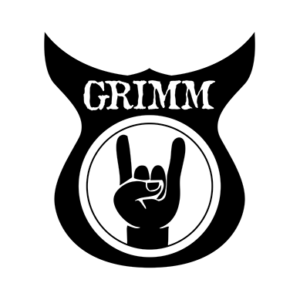


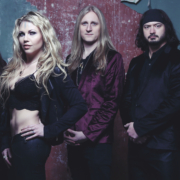
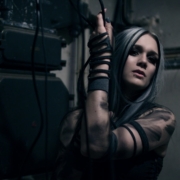
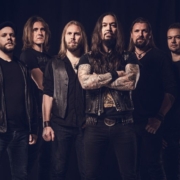
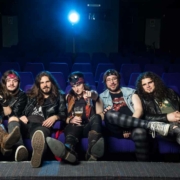




Leave a Reply
Want to join the discussion?Feel free to contribute!